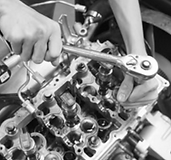Engineering and Technology Quarterly Reviews
ISSN 2622-9374




Published: 14 September 2023
Web Design, RAD, Mamigaya, EUCS
Muhamad Fajri Tirta Nugraha, Adhi Kusnadi, Fenina Adline Twince Tobing
Universitas Multimedia Nusantara, Indonesia

Download Full-Text Pdf
10.5281/zenodo.8340283
Pages: 10-18
Keywords: Web Design, RAD, Mamigaya, EUCS
Abstract
Rapid Application Development (RAD) is a software development method that speeds up software production by reducing complex and time-consuming processes. RAD can be used as a reference for developing superior information systems in speed, accuracy and lower cost. In this study, the application of the RAD method will be carried out to design a business website selling Mamigaya breastfeeding clothes by testing using EUCS and blackbox testing. The first phase of RAD is understanding fast design system analysis & requirements. Requires a high level or knowledgeable end user to define what the system function should be. The second stage is a repetition of the prototype cycles development stage, namely development, demonstration, refine. This includes creating physical designs for databases and mainly focuses on translating designs into programming code. Based on the results obtained from a survey using EUCS, the satisfaction level of respondents reached 88.58% and the results of blackbox testing showed that the features on the website could function. Thus, it can be concluded that the application of RAD can produce a good website.
References
Abd Ghadas, Z. A., Wan Ismail, W. N., Abd Aziz, A., Harun, N. A., Jusop, M., & Abd Rahman, C. A. (2015). LAFAMS: Account Management System for Malaysian Small Legal Firms. Pertanika Journal of Social Sciences & Humanities, 23.
Abdinnour‐Helm, S. F., Chaparro, B. S., & Farmer, S. M. (2005). Using the end‐user computing satisfaction (EUCS) instrument to measure satisfaction with a web site. Decision Sciences, 36(2), 341–364.
Beynon-Davies, P., Carne, C., Mackay, H., & Tudhope, D. (1999). Rapid application development (RAD): an empirical review. European Journal of Information Systems, 8(3), 211–223.
Flora, H. K. (2018). Adopting an agile approach for the development of mobile applications.
Joshi, A., Kale, S., Chandel, S., & Pal, D. K. (2015). Likert scale: Explored and explained. British Journal of Applied Science & Technology, 7(4), 396.
Kirmani, M. M. (2017). Agile methods for mobile application development: A comparative analysis. International Journal of Advanced Research in Computer Science, 8(5).
Kusnadi, A., Wella, Winantyo Rangga, & Pane, I. Z. (2018). Evaluation of Feature Detectors on Repeatability Quality of Facial Keypoints In Triangulation Method. 3–6.
Santoso, B. G., Tobing, F. A. T., & Kusnadi, A. (2023). ERP Odoo Based Medical Reimbursement System Using Scrum Method:(Study Case: Group of Retail and Publishing Kompas Gramedia). 2023 20th International Joint Conference on Computer Science and Software Engineering (JCSSE), 327–332.
Setyatama, F., & Andrianto, I. K. (2018). Rapid Application Development (RAD) Method For Developing Clinical Laboratory Information System (Case Study: PT. Populer Sarana Medika). JEECS (Journal of Electrical Engineering and Computer Sciences), 3(2), 421–430.
Subhiyakto, E. R., & Astuti, Y. P. (2019). Design and development meeting schedule management application using the rad method. 2019 International Conference of Artificial Intelligence and Information Technology (ICAIIT), 60–64.
Tabrani, M., & Priyandaru, H. (2021). Application of the Rapid Application Development Method to the BAZNAS Zakat Receipt Information System in Karawang. Jurnal Teknologi Dan Open Source, 4(1), 78–84.
Viglianisi, E., Dallago, M., & Ceccato, M. (2020). Resttestgen: automated black-box testing of restful apis. 2020 IEEE 13th International Conference on Software Testing, Validation and Verification (ICST), 142–152.
